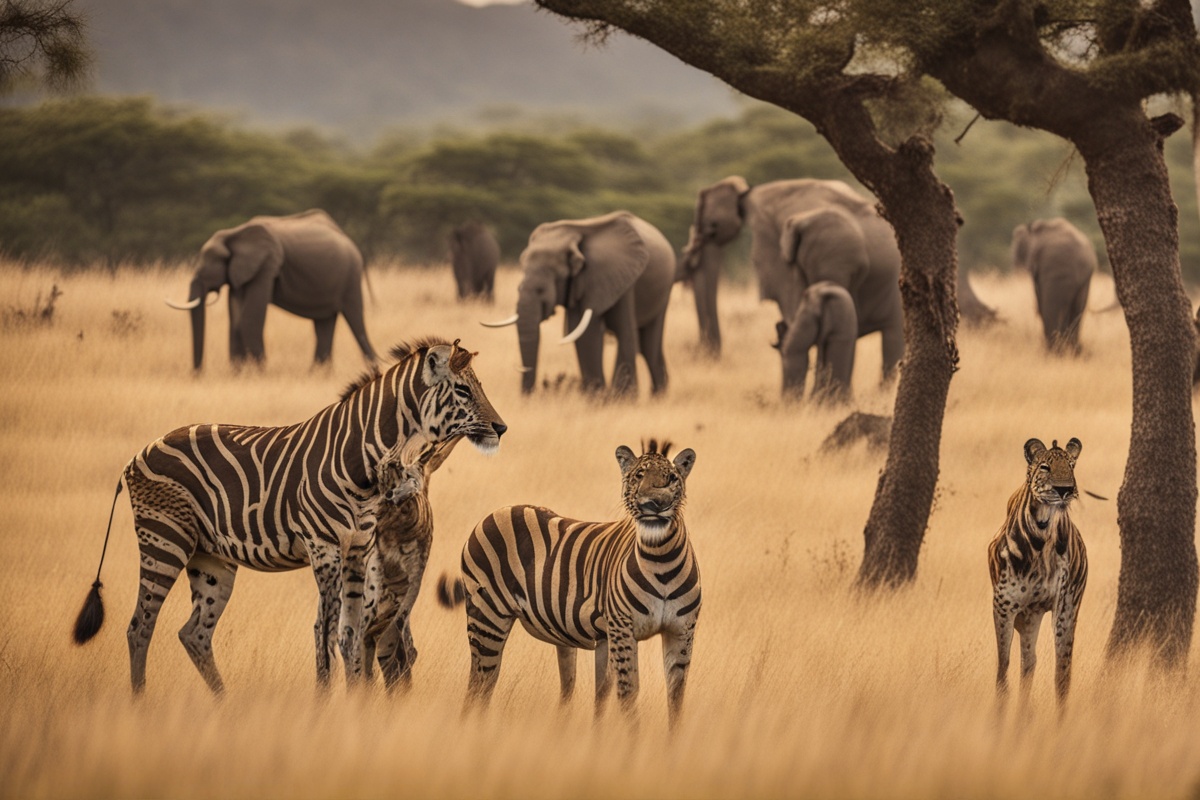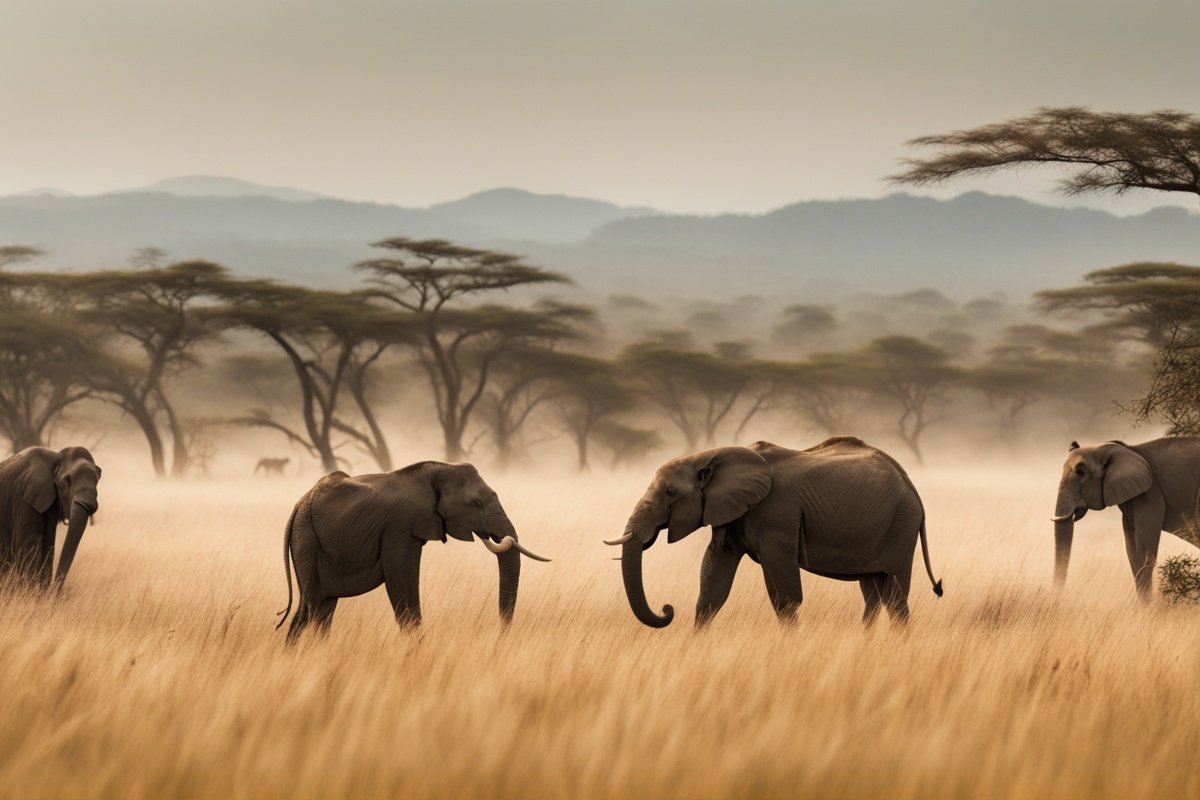There’s something utterly magical about the untamed wilderness—a place where nature reigns supreme, and every rustle in the underbrush could signal an unforgettable encounter. If you’ve ever dreamed of immersing yourself in the heart of the wild, then Guided Jungle Safari Adventures are your ticket to an experience that’s equal parts thrilling and humbling. I’ve been fortunate enough to tread through dense jungles and sprawling savannas, and let me tell you, nothing compares to the adrenaline rush of spotting a leopard’s silhouette at dusk or hearing the distant roar of a lion while a seasoned guide whispers, “Stay still.” In this post, we’ll dive deep into what makes guided jungle safaris so special, why they’re worth every penny, and how to ensure you’re embarking on an adventure that’s safe, ethical, and unforgettable.
What Are Guided Jungle Safari Adventures?
At their core, Guided Jungle Safari Adventures are curated expeditions into the wild, led by expert guides who know the terrain like the back of their hand. These aren’t just casual strolls through a park; they’re immersive journeys into ecosystems teeming with life—think towering rainforests, sprawling grasslands, or swampy wetlands. Whether you’re tracking Bengal tigers in India’s Ranthambore National Park or marveling at the biodiversity of the Amazon, a guided safari ensures you’re not just a spectator but a participant in nature’s grand theater. I remember my first safari in Tanzania’s Serengeti; our guide, a local Maasai tracker, pointed out subtle paw prints in the dust that led us to a pride of lions. Without his keen eye, I’d have missed the magic entirely. These adventures often include jeeps, boats, or even walking tours, tailored to the environment and your comfort level.
Why Choose a Guided Safari Over a Solo Trek?
Now, you might be wondering, “Can’t I just grab a map and go?” Sure, the idea of a solo trek sounds romantic, but the jungle isn’t a forgiving place. Guided Jungle Safari Adventures offer safety, expertise, and access that you simply can’t replicate on your own. For starters, guides are trained to read the landscape—knowing where animals are likely to appear and, more importantly, how to avoid dangerous situations. They’re also your cultural bridge, often sharing local lore or conservation insights that add depth to the experience. Imagine you’re deep in the Congo Basin, and a sudden storm rolls in. A guide knows the nearest shelter and how to navigate back, while a solo adventurer might be left scrambling. Plus, many protected areas outright prohibit unguided entry to prevent harm to both visitors and wildlife. According to a 2021 report by the World Wildlife Fund (WWF), guided tours in national parks have significantly reduced poaching incidents by maintaining a human presence—proof that your participation can directly support conservation.
Top Destinations for Guided Jungle Safari Adventures
The world is brimming with jaw-dropping destinations for jungle safaris, each offering a unique slice of wilderness. Here are a few standout spots that should be on your radar:
- Kruger National Park, South Africa: Famous for the Big Five (lion, leopard, elephant, rhino, and buffalo), Kruger offers a mix of luxury lodges and rugged bush camps. My first sighting of a black rhino here felt like stepping into a documentary.
- Amazon Rainforest, Brazil/Peru: A labyrinth of rivers and dense jungle, the Amazon is a biodiversity hotspot. Guided boat safaris reveal pink river dolphins and sloths if you’re lucky.
- Jim Corbett National Park, India: Known for its elusive tigers, this park blends rugged terrain with rich history. Guides here often double as storytellers, recounting tales of legendary man-eaters.
- Bwindi Impenetrable National Park, Uganda: For gorilla trekking, there’s no place like Bwindi. The guided hikes are physically demanding but worth it when you lock eyes with a silverback.
Each destination has its own charm, but they all share one thing: the expertise of local guides transforms a trip into a profound connection with nature.
How to Prepare for a Guided Jungle Safari Adventure
Preparation is key to making the most of your safari—and trust me, you don’t want to be the one who forgets bug spray in mosquito territory. Here’s a practical checklist based on my own missteps and successes:
- Gear Up: Pack lightweight, neutral-colored clothing (bright colors can spook animals), sturdy boots, a wide-brimmed hat, and binoculars. A good camera with a zoom lens is a game-changer.
- Health Precautions: Consult your doctor about vaccinations or malaria prophylaxis, especially for tropical regions. Carry a small first-aid kit for minor scrapes.
- Research Your Operator: Not all safari companies are created equal. Look for ones with certified guides and a commitment to ethical tourism. Reviews on platforms like TripAdvisor can be a goldmine.
- Know the Rules: Guides will brief you on dos and don’ts—listen up. No littering, no loud noises, and definitely no feeding the animals, no matter how cute they look.
I learned the hard way during a safari in Kenya when I underestimated the sun and ended up with a nasty burn. Now, I never skip sunscreen or a hat, no matter how overcast it seems. A little prep goes a long way in ensuring you’re focused on the adventure, not the discomfort.
The Ethics of Guided Jungle Safari Adventures
Let’s talk about the elephant in the room—pun intended. Wildlife tourism, including Guided Jungle Safari Adventures, can be a double-edged sword. On one hand, it funds conservation and provides livelihoods for local communities. On the other, poorly managed tours can disrupt habitats or exploit animals. I’ve seen both sides: a responsible operator in Botswana who limited group sizes to minimize impact, and a questionable outfit in Southeast Asia pushing elephant rides despite clear ethical concerns. So, how do you ensure your adventure does more good than harm? Choose operators accredited by organizations like the International Ecotourism Society. Ask questions about their conservation contributions and animal welfare policies. And remember, if a tour guarantees sightings or close encounters, it’s a red flag—wild animals aren’t on a schedule. As Dr. Jane Goodall often emphasizes, true wildlife experiences respect the autonomy of the creatures we admire.
Tips for Maximizing Your Safari Experience
Finally, let’s wrap up with some insider tips to elevate your Guided Jungle Safari Adventure from good to extraordinary. First, manage your expectations—nature doesn’t perform on cue. You might not see a tiger on day one, but the anticipation is half the thrill. Second, engage with your guide. Ask about animal behavior or local ecology; their passion is contagious. Third, embrace early mornings. Dawn is when the jungle comes alive, and the golden light makes every sighting feel cinematic. Lastly, disconnect to reconnect. Put the phone down (except for photos) and soak in the sounds and smells. I still recall a quiet moment in the Pantanal, Brazil, where the chorus of howler monkeys drowned out my thoughts—it was pure serenity. These small shifts in mindset can turn a trip into a lifelong memory.
References
- World Wildlife Fund (WWF) – How Sustainable Tourism Helps Protect Wildlife
- International Ecotourism Society – What Is Ecotourism?
- National Geographic – Responsible Wildlife Tourism
- Jane Goodall Institute – Our Legacy
- TripAdvisor – Travelers’ Choice Awards
Disclaimer: This article is for informational purposes only, based on general research and personal experience. It is not intended to serve as a substitute for professional advice. Wildlife safaris involve inherent risks, and conditions can vary widely depending on location, operator, and individual circumstances. Always consult with qualified professionals, such as certified travel advisors or local authorities, for personalized guidance before embarking on any jungle safari adventure. Your safety and the well-being of the wildlife should always come first, and decisions should be made with the most current and relevant information available.
This content is for informational purposes only and not a substitute for professional advice.


